I’ve been using this little camera for a few months now. So if you want to find out what it’s like to use and, more importantly, if the image quality is any good, then read this review of the Fujifilm X100V.
Fujifilm X100V Overview and Specifications
The X100V has certainly come with worthy upgrades of the previous model. Being the 5th generation, Fuji has listened and learnt what photographers want. Weather sealing, the articulating touch screen, a new ISO dial and now 4K video capabilities. This is also one camera which doesn’t fail to have an impressive look with a hint of vintage nostalgia. The Fuji X100V is made with top-class materials and comes in two colors, silver and black. No matter the color variation, the Fujifilm X100V has to be up there with the most eye-pleasing cameras from a design perspective. Simply put, it’s a work of art.
Who is the Fuji X100V for?
The Fuji X100V serves both the amateur and professional street photographers. The X100V will also appeal to travel photographers and anyone who wants that great looking camera. The Fujifilm X100V gives a sense of nostalgia and warmth that not many cameras today achieve. Basically, it makes me want to head out and take photos. With a 35mm equivalent field of view, this camera really will appeal to anyone documenting the environment, candid moments and day to day capture. This focal length is also considered to be an ideal one for portraits in peculiar cases. Given how discreet this camera is, it is also a wise choice for the hobbyist who is always on the go. It is quite easy to keep in a small bag or even in your pocket, It’s worth mentioning that the Fuji X100V isn’t the cheapest camera in its range. It is aimed at the enthusiast and the professional-level users as a second shooter and who, for those who desire quality in their tool of choice, prefer to use a prime lens rather than zoom alternatives. That is why it can also be an amazing fit for those film photographers who praise these limitations. The X100V is quite likely to be the digital alternative to their old rangefinder systems with the manual controls, rangefinder-style and film simulations.
Key Features
Let’s dive into the specifics of what makes the Fuji X110V one of the best in its category.
Sensor and Image Quality
The Fuji X100V uses the latest generation 26-megapixel APS-C sensor by Fujifilm. It is definitely a step up in resolution from the previous models as it uses the same technology as the X-Pro3, one of Fujifilm’s flagship models. The X-Trans CMOS 4 sensor and X-Processor 4 provide exceptionally detailed image quality and writing speed when photographing both stills and video. I mainly use this camera for street captures, and despite the crop format, the resolution of the X100V is quite impressive. The completely redesigned lens can be a great factor related to this. The 23mm f/2 pancake lens has eight elements in six groups. The big upgrade, aside from the faster autofocus and mechanics, is shooting wide open at f/2 sharper results than the previous models. Corner and even the center sharpness shows an improvement throughout all apertures. It shows a nice and consistent quality from edges to edges and a fine resolving power which matches the X100V’s newly introduced sensor technology. Not to mention the built-in 4-stop ND filter which comes in super handy when shooting in sunny conditions. The image quality is one of the key factors why I prefer to use this model, instead of its other alternative, the X100F. The Fujifilm X100V beats the F by miles in this department, especially when looking at infinity focus. Related to distortions, there’s a minimal chromatic aberration which is also the nature of using APS-C format. Besides this, the vignetting and color fringing is hardly noticeable. Any of these would take a trained eye to spot and easy fix in post-production. When looking at low light performance, all the benefits of Fuji’s ISO invariant sensor comes to meaning. Even when using relatively high ISO’s like 3200/4000 the images feature very moderate noise. Although the maximum ISO 12800 is really pushing the sensor’s limitation, you can expect quite a bit of noise. It’s worth noting the dynamic range performance of the Fuji X100V is spectacular, again despite the APS-C format. I tend to underexpose my images slightly for the way I edit. There is a great recovery in details, and the grain is negligible when lifting the shadows excessively. The RAW images in terms of holding information and editability are quite comparable to even some full frame alternatives, such as the Leica Q2, and Sony RX1 models even when editing pictures with high ISO values. Fuji cameras are often praised for their straight out of camera JPEG’s, and this is still adequate. The X100V features the built-in color chrome effect and other classic film profiles. These are fun additions for those who prefer compressed formats. If editing isn’t really something you enjoy and these come in very handy.
Focusing and Burst
The X100V has been spiced up a notch, and it has a hybrid autofocus system which is another upgrade from the previous models. It’s a combination of a contrast detection system alongside 425-point phase-detection AF. The speed is great, and the autofocus is very responsive. However, it can struggle a little bit in bit darker conditions. Despite Fuji’s claim on the -5EV focusing capabilities, this camera is not the strongest in almost completely dark environments. This feature significantly improved from previous models, but still, if you’re not shooting in daylight, you might have to switch to manual focus. The face detection and tracking AF is also impressive, and there is no tendency to miss the desired subject even when shooting a higher speed of motion. The Fujifilm X100V comes with an 11 fps burst rate while using the mechanical shutter and 20 fps in electrical shutter mode. This is certainly more than I need personally, but it is an amazing addition for candid shots and street photography. Using UHS-II cards, the buffer is even more spectacular. It’s rated at about 17 RAW files for the buffer to fill. The good thing is that there is no menu or camera lock up whilst the buffer is clearing. As I mentioned previously, this camera isn’t aimed at sports photographers, but it is more than decent. Another feature that I regularly use with this camera is zone focusing and manual focus. I often do street photography, so for me, it’s super useful. Sadly, as it’s a built-in feature, and there are no metrics on the lens, it does not give the pure feeling of analog photography but still a handy approach. Another bonus from this lens is that it has a minimum focus distance of around 10-15 cm, which is awesome, especially for distorted portraits when shooting street scenes.
Video Features
When people mention the Fujifilm X100V, video isn’t the first thing they think of, though it is competent for video. It has now 4K/30p and F-log capability and some other nice elements for video enthusiasts. There’s even a 120 fps mode at 1080p for the slow-mo guys. It can also record a 10-bit 4:2:2 color externally, using the HDMI port. This is quite an impressive feature for flexibility in post-production and color grading. Personally, I wouldn’t be buying this camera solely for its video purposes. There are such drawbacks as the disabled ND filter in video mode or the lack of stabilization. Yes, sadly, there is no IBIS (in-body stabilization) or lens stabilization when taking videos. So without a gimbal or tripod, it certainly has its limitations when going handheld. That said if those two things aren’t an issue for you, the video features can certainly hold their own, but if so… You should opt for other mirrorless alternatives.
Body and Handling
Fujifilm X100V has a really compact dimension with 5.0 x 2.9 x 2.1 in. (128 x 75 x 53 mm). It weighs 478 grams. While it’s half the size of the average DSLRs, the build quality is excellent. With aluminum finishes and a sturdy, synthetic leather grip the camera feels solid in hand. <img class=“aligncenter wp-image-502609 size-full” src=“https://expertphotography.com/wp-content/uploads/2021/01/fuji-x100-camera-body-2.jpg" alt=“Image of the Fujifilm X100V camera body from the top. ” width=”700″ height=”467″ /> For my very average hands and me, the dials and buttons fit perfectly. They are also customizable, and you can personalise your settings for greater accessibility. You can choose between 64 different tasks to function buttons. This is the many reasons why Fuji X100V is my ultimate street photography partner. <img class=“aligncenter wp-image-502612 size-full” src=“https://expertphotography.com/wp-content/uploads/2021/01/fuji-x100-camera-body-6.jpg" alt=“Image of the Fujifilm X100V mirrorless camera‘s buttons and dials.” width=”700″ height=”467″ /> The X100V body has a retro old-school rangefinder look with the dedicated shutter speed and exposure compensation dial. You can also change the ISO settings if you pull up the shutter dial. A nice reference point to the former technique used in film cameras. I love that everything you need is at your fingertips without having to dive into the camera menu. No matter that your camera is on or off.
The 2-way tilt screen is another nice addition to the X100 lineup. Getting high or getting low for shots is now a lot easier and opens up new opportunities whilst out and about. Nobody wants to lay down in the middle of the street, right? I use the flippy screen even when I’m shooting at wedding ceremonies, as the X100V has become my favourite backup camera in recent times. The bright 1.6M-dot LCD touch sensible LCD is quite responsive, which is very useful when shooting in focus peaking mode. It’s a great competitor to the 3.69M-dot OLED electronic viewfinder, so it’s completely upon the photographer’s preference, whether you want to hold it up to the eyes. If so, you can switch between optical and electronic viewfinder.
Weather-sealing is also a welcome addition, but sadly it comes with one catch. You have to purchase an additional filter separately to unlock this. For me, this kit is worth it for peace of mind. However, I noticed the lens cover doesn’t fit perfectly after this mod—something you’ll have to consider before opting for the kit. In terms of battery and card slots, the X100V lacks the dual SD slot but has an NP-W126S battery with a longer lifespan. It usually takes around 420 images to drain the battery, but it’s more around 300 exposures if using EVF from experience. For me, this performance is enough for a few hours, but I always take an extra battery when going out for a photo shoot.
Alternatives
The first competitor is the famous Ricoh GR III. This camera is even smaller than the X100V and has a great snap focus feature. It’s super light so you can take it anywhere and not be noticed. The files are great to edit, though sadly there’s no viewfinder built-in. Without this or a tilt screen, it can sometimes be hard to shoot especially for street purposes. A more expensive alternative is the Leica Q2 which offers elegance and superb image quality. This gorgeous looking camera utilises a fixed 28mm f1.7 Summilux lens with stabilization. If you don’t mind the price point, it’s certainly worth a shot to be a part of the Leica community. As a third variant, Sony’s latest Alpha 7C offers a spectacular full frame sensor with an interchangeable lens mount and 5-axis stabilization. Again, this is a more expensive full frame camera body, but with the option to change lenses, it could be enough to tempt you. In terms of size and compact design, they share the same ideology. Lastly, you can also opt for a Fuji X-Pro3, which is the X100’s bigger sibling. It’s also a rangefinder-style camera with the option of changing lenses. Bigger isn’t always better, but the Fuji X-Pro3 does have many benefits over the X100V, especially if you need the flexibility of different focal lengths and extended features.
Conclusion
The Fuji X100V for me is the camera that I really look forward to taking out and using. It gives everything that I personally want in a street and travel camera. It’s compact, built superbly well and has an eye-pleasing retro look. Besides, the image quality is on par with some of the top-end camera models. They’re certainly built to last thanks to their design and firmware updates. I highly recommend this great little camera, as it has become my go-to camera during cocktail hours at wedding ceremonies.
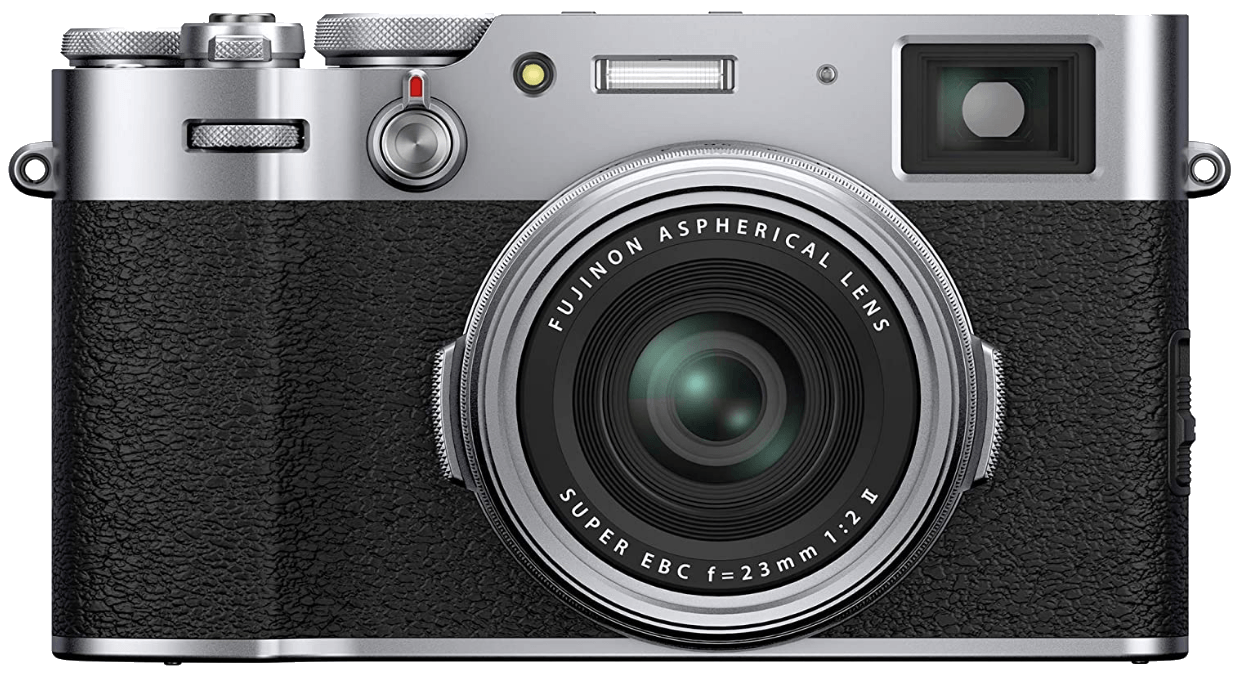




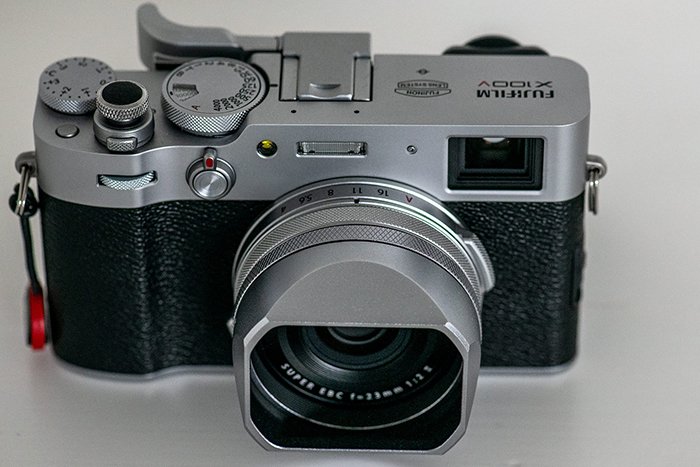
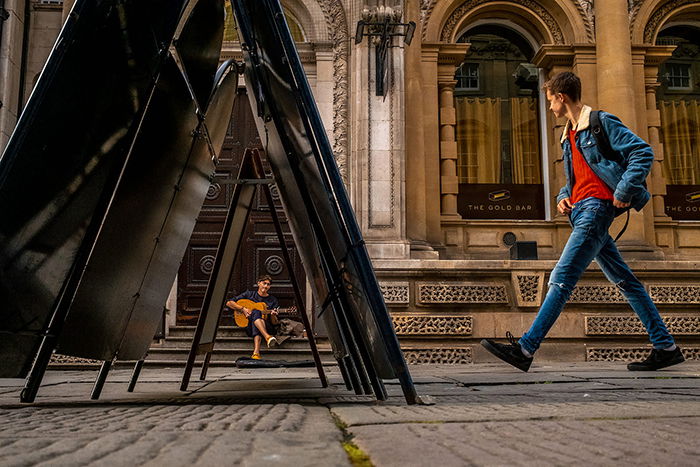
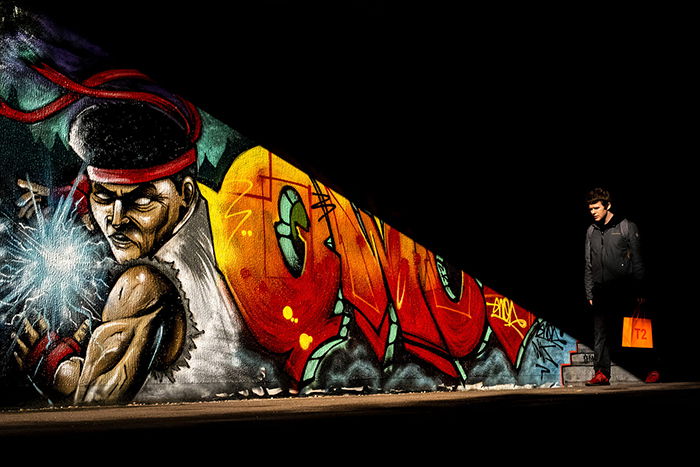

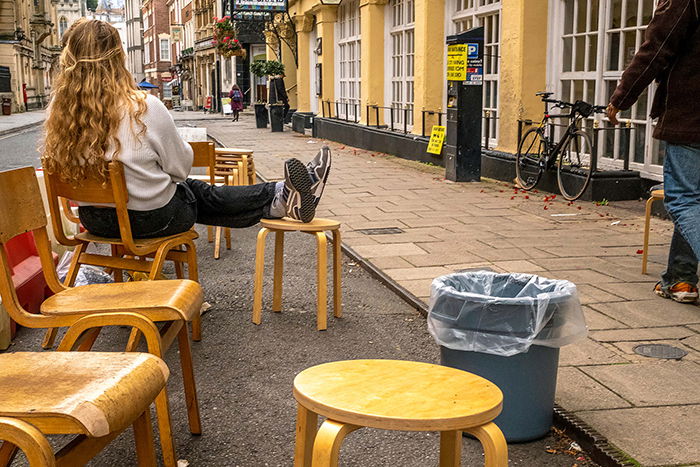
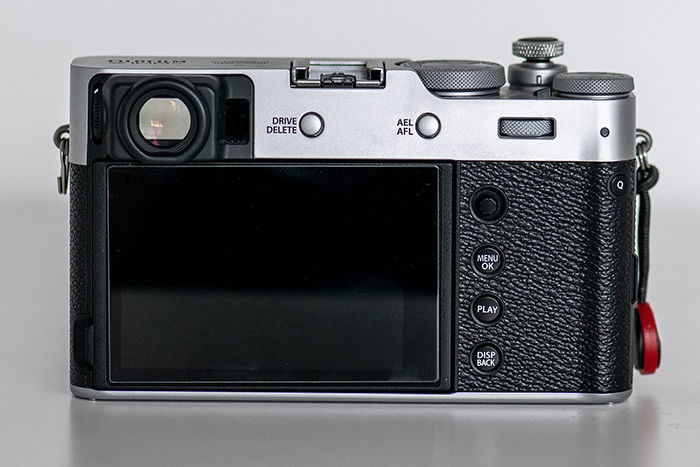
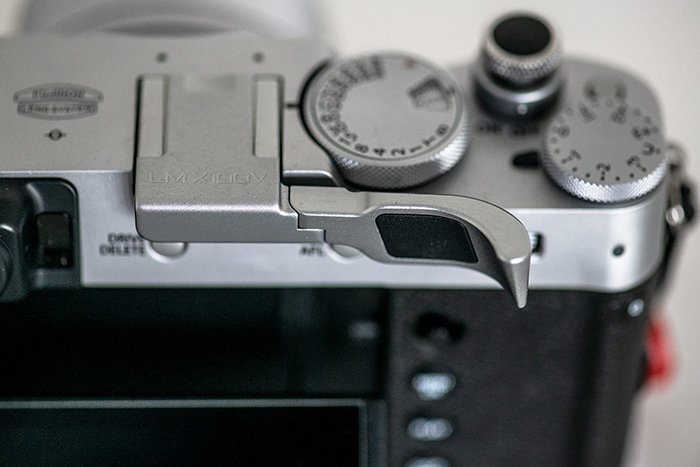


title: “Fujifilm X100V Review Should You Buy It In 2023 " ShowToc: true date: “2023-02-10” author: “Sonya Brinkley”
I’ve been using this little camera for a few months now. So if you want to find out what it’s like to use and, more importantly, if the image quality is any good, then read this review of the Fujifilm X100V.
Fujifilm X100V Overview and Specifications
The X100V has certainly come with worthy upgrades of the previous model. Being the 5th generation, Fuji has listened and learnt what photographers want. Weather sealing, the articulating touch screen, a new ISO dial and now 4K video capabilities. This is also one camera which doesn’t fail to have an impressive look with a hint of vintage nostalgia. The Fuji X100V is made with top-class materials and comes in two colors, silver and black. No matter the color variation, the Fujifilm X100V has to be up there with the most eye-pleasing cameras from a design perspective. Simply put, it’s a work of art.
Who is the Fuji X100V for?
The Fuji X100V serves both the amateur and professional street photographers. The X100V will also appeal to travel photographers and anyone who wants that great looking camera. The Fujifilm X100V gives a sense of nostalgia and warmth that not many cameras today achieve. Basically, it makes me want to head out and take photos. With a 35mm equivalent field of view, this camera really will appeal to anyone documenting the environment, candid moments and day to day capture. This focal length is also considered to be an ideal one for portraits in peculiar cases. Given how discreet this camera is, it is also a wise choice for the hobbyist who is always on the go. It is quite easy to keep in a small bag or even in your pocket, It’s worth mentioning that the Fuji X100V isn’t the cheapest camera in its range. It is aimed at the enthusiast and the professional-level users as a second shooter and who, for those who desire quality in their tool of choice, prefer to use a prime lens rather than zoom alternatives. That is why it can also be an amazing fit for those film photographers who praise these limitations. The X100V is quite likely to be the digital alternative to their old rangefinder systems with the manual controls, rangefinder-style and film simulations.
Key Features
Let’s dive into the specifics of what makes the Fuji X110V one of the best in its category.
Sensor and Image Quality
The Fuji X100V uses the latest generation 26-megapixel APS-C sensor by Fujifilm. It is definitely a step up in resolution from the previous models as it uses the same technology as the X-Pro3, one of Fujifilm’s flagship models. The X-Trans CMOS 4 sensor and X-Processor 4 provide exceptionally detailed image quality and writing speed when photographing both stills and video. I mainly use this camera for street captures, and despite the crop format, the resolution of the X100V is quite impressive. The completely redesigned lens can be a great factor related to this. The 23mm f/2 pancake lens has eight elements in six groups. The big upgrade, aside from the faster autofocus and mechanics, is shooting wide open at f/2 sharper results than the previous models. Corner and even the center sharpness shows an improvement throughout all apertures. It shows a nice and consistent quality from edges to edges and a fine resolving power which matches the X100V’s newly introduced sensor technology. Not to mention the built-in 4-stop ND filter which comes in super handy when shooting in sunny conditions. The image quality is one of the key factors why I prefer to use this model, instead of its other alternative, the X100F. The Fujifilm X100V beats the F by miles in this department, especially when looking at infinity focus. Related to distortions, there’s a minimal chromatic aberration which is also the nature of using APS-C format. Besides this, the vignetting and color fringing is hardly noticeable. Any of these would take a trained eye to spot and easy fix in post-production. When looking at low light performance, all the benefits of Fuji’s ISO invariant sensor comes to meaning. Even when using relatively high ISO’s like 3200/4000 the images feature very moderate noise. Although the maximum ISO 12800 is really pushing the sensor’s limitation, you can expect quite a bit of noise. It’s worth noting the dynamic range performance of the Fuji X100V is spectacular, again despite the APS-C format. I tend to underexpose my images slightly for the way I edit. There is a great recovery in details, and the grain is negligible when lifting the shadows excessively. The RAW images in terms of holding information and editability are quite comparable to even some full frame alternatives, such as the Leica Q2, and Sony RX1 models even when editing pictures with high ISO values. Fuji cameras are often praised for their straight out of camera JPEG’s, and this is still adequate. The X100V features the built-in color chrome effect and other classic film profiles. These are fun additions for those who prefer compressed formats. If editing isn’t really something you enjoy and these come in very handy.
Focusing and Burst
The X100V has been spiced up a notch, and it has a hybrid autofocus system which is another upgrade from the previous models. It’s a combination of a contrast detection system alongside 425-point phase-detection AF. The speed is great, and the autofocus is very responsive. However, it can struggle a little bit in bit darker conditions. Despite Fuji’s claim on the -5EV focusing capabilities, this camera is not the strongest in almost completely dark environments. This feature significantly improved from previous models, but still, if you’re not shooting in daylight, you might have to switch to manual focus. The face detection and tracking AF is also impressive, and there is no tendency to miss the desired subject even when shooting a higher speed of motion. The Fujifilm X100V comes with an 11 fps burst rate while using the mechanical shutter and 20 fps in electrical shutter mode. This is certainly more than I need personally, but it is an amazing addition for candid shots and street photography. Using UHS-II cards, the buffer is even more spectacular. It’s rated at about 17 RAW files for the buffer to fill. The good thing is that there is no menu or camera lock up whilst the buffer is clearing. As I mentioned previously, this camera isn’t aimed at sports photographers, but it is more than decent. Another feature that I regularly use with this camera is zone focusing and manual focus. I often do street photography, so for me, it’s super useful. Sadly, as it’s a built-in feature, and there are no metrics on the lens, it does not give the pure feeling of analog photography but still a handy approach. Another bonus from this lens is that it has a minimum focus distance of around 10-15 cm, which is awesome, especially for distorted portraits when shooting street scenes.
Video Features
When people mention the Fujifilm X100V, video isn’t the first thing they think of, though it is competent for video. It has now 4K/30p and F-log capability and some other nice elements for video enthusiasts. There’s even a 120 fps mode at 1080p for the slow-mo guys. It can also record a 10-bit 4:2:2 color externally, using the HDMI port. This is quite an impressive feature for flexibility in post-production and color grading. Personally, I wouldn’t be buying this camera solely for its video purposes. There are such drawbacks as the disabled ND filter in video mode or the lack of stabilization. Yes, sadly, there is no IBIS (in-body stabilization) or lens stabilization when taking videos. So without a gimbal or tripod, it certainly has its limitations when going handheld. That said if those two things aren’t an issue for you, the video features can certainly hold their own, but if so… You should opt for other mirrorless alternatives.
Body and Handling
Fujifilm X100V has a really compact dimension with 5.0 x 2.9 x 2.1 in. (128 x 75 x 53 mm). It weighs 478 grams. While it’s half the size of the average DSLRs, the build quality is excellent. With aluminum finishes and a sturdy, synthetic leather grip the camera feels solid in hand. <img class=“aligncenter wp-image-502609 size-full” src=“https://expertphotography.com/wp-content/uploads/2021/01/fuji-x100-camera-body-2.jpg" alt=“Image of the Fujifilm X100V camera body from the top. ” width=”700″ height=”467″ /> For my very average hands and me, the dials and buttons fit perfectly. They are also customizable, and you can personalise your settings for greater accessibility. You can choose between 64 different tasks to function buttons. This is the many reasons why Fuji X100V is my ultimate street photography partner. <img class=“aligncenter wp-image-502612 size-full” src=“https://expertphotography.com/wp-content/uploads/2021/01/fuji-x100-camera-body-6.jpg" alt=“Image of the Fujifilm X100V mirrorless camera‘s buttons and dials.” width=”700″ height=”467″ /> The X100V body has a retro old-school rangefinder look with the dedicated shutter speed and exposure compensation dial. You can also change the ISO settings if you pull up the shutter dial. A nice reference point to the former technique used in film cameras. I love that everything you need is at your fingertips without having to dive into the camera menu. No matter that your camera is on or off.
The 2-way tilt screen is another nice addition to the X100 lineup. Getting high or getting low for shots is now a lot easier and opens up new opportunities whilst out and about. Nobody wants to lay down in the middle of the street, right? I use the flippy screen even when I’m shooting at wedding ceremonies, as the X100V has become my favourite backup camera in recent times. The bright 1.6M-dot LCD touch sensible LCD is quite responsive, which is very useful when shooting in focus peaking mode. It’s a great competitor to the 3.69M-dot OLED electronic viewfinder, so it’s completely upon the photographer’s preference, whether you want to hold it up to the eyes. If so, you can switch between optical and electronic viewfinder.
Weather-sealing is also a welcome addition, but sadly it comes with one catch. You have to purchase an additional filter separately to unlock this. For me, this kit is worth it for peace of mind. However, I noticed the lens cover doesn’t fit perfectly after this mod—something you’ll have to consider before opting for the kit. In terms of battery and card slots, the X100V lacks the dual SD slot but has an NP-W126S battery with a longer lifespan. It usually takes around 420 images to drain the battery, but it’s more around 300 exposures if using EVF from experience. For me, this performance is enough for a few hours, but I always take an extra battery when going out for a photo shoot.
Alternatives
The first competitor is the famous Ricoh GR III. This camera is even smaller than the X100V and has a great snap focus feature. It’s super light so you can take it anywhere and not be noticed. The files are great to edit, though sadly there’s no viewfinder built-in. Without this or a tilt screen, it can sometimes be hard to shoot especially for street purposes. A more expensive alternative is the Leica Q2 which offers elegance and superb image quality. This gorgeous looking camera utilises a fixed 28mm f1.7 Summilux lens with stabilization. If you don’t mind the price point, it’s certainly worth a shot to be a part of the Leica community. As a third variant, Sony’s latest Alpha 7C offers a spectacular full frame sensor with an interchangeable lens mount and 5-axis stabilization. Again, this is a more expensive full frame camera body, but with the option to change lenses, it could be enough to tempt you. In terms of size and compact design, they share the same ideology. Lastly, you can also opt for a Fuji X-Pro3, which is the X100’s bigger sibling. It’s also a rangefinder-style camera with the option of changing lenses. Bigger isn’t always better, but the Fuji X-Pro3 does have many benefits over the X100V, especially if you need the flexibility of different focal lengths and extended features.
Conclusion
The Fuji X100V for me is the camera that I really look forward to taking out and using. It gives everything that I personally want in a street and travel camera. It’s compact, built superbly well and has an eye-pleasing retro look. Besides, the image quality is on par with some of the top-end camera models. They’re certainly built to last thanks to their design and firmware updates. I highly recommend this great little camera, as it has become my go-to camera during cocktail hours at wedding ceremonies.













